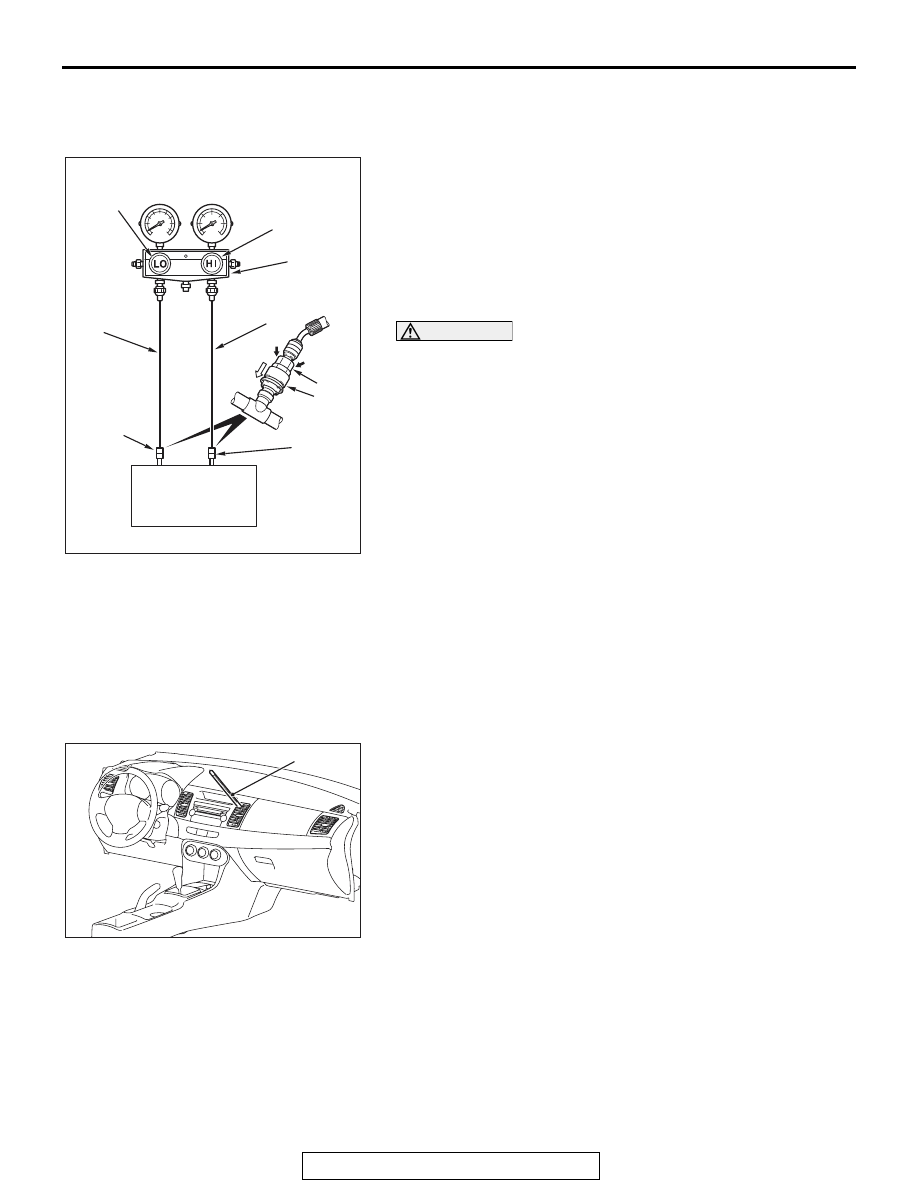Content .. 1289 1290 1291 1292 ..
Mitsubishi Evolution X. Manual - part 1291

ON-VEHICLE SERVICE
TSB Revision
HEATER, AIR CONDITIONING AND VENTILATION
55-115
PERFORMANCE TEST
M1552001400957
The vehicles to be tested should be parked out of direct sun-
light.
1. Close the high and low-pressure valve of the gauge
manifold.
2. Connect the charging hose (blue) to the low-pressure valve
and connect the charging hose (red) to the high-pressure
valve of the gauge manifold.
3. Install the quick joint (for low-pressure) to the charging hose
(blue), and connect the quick joint (for high-pressure) to the
charging hose (red).
CAUTION
• To connect the quick joint, press section A firmly
against the service valve until a click is heard.
• When connecting, run your hand along the hose while
pressing to ensure that there are no bends in the hose.
4. Connect the quick joint (for low-pressure) to the
low-pressure service valve and connect the quick joint (for
high-pressure) to the high-pressure service valve.
NOTE: The high-pressure service valve is on the A/C pipe
and the low-pressure service valve is on the suction hose.
5. Start the engine.
6. Set the A/C controls as follows:
• A/C switch: A/C − ON position
• Mode selection: FACE position
• Temperature control: MAXIMUM COOLING position
• Air selection: RECIRCULATION position
• Blower switch: Maximum air volume
7. Set the engine speed to the idle speed.
8. Engine should be warmed up with hood, doors and windows
opened.
9. Insert a thermometer in the center air outlet and operate the
engine for 20 minutes.
NOTE: If the A/C clutch cycles, take the reading before the
clutch disengages.
10.Note the discharge air temperature.
AC609415
Low-pressure
valve
High-pressure
valve
Gauge manifold
Charging
hose (Red)
A
Sleeve
Charging
hose (Blue)
Adaptor
valve
(For
low-pres-
sure)
Adaptor
valve
(For high-
pressure)
Low-
pressure
service
valve
High-
pressure
service
valve
AC
AC609414AB
Thermometer